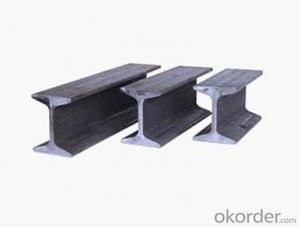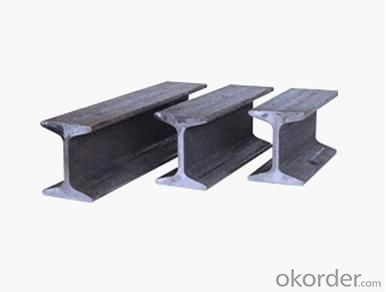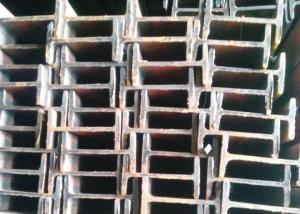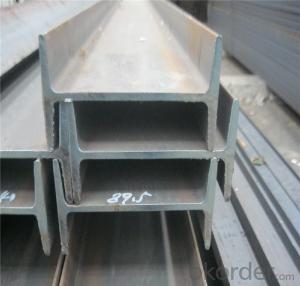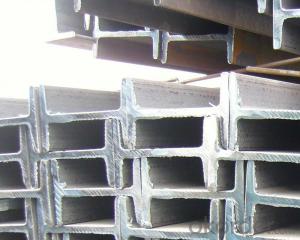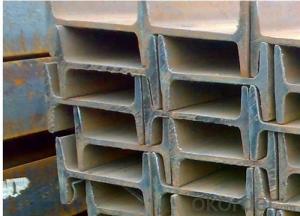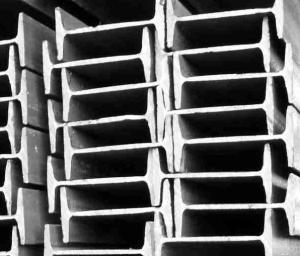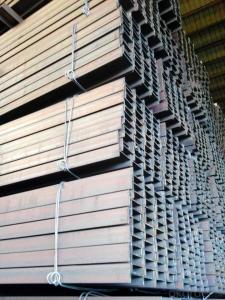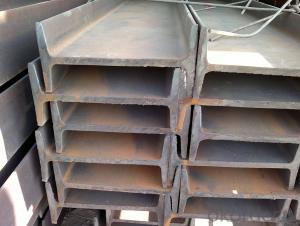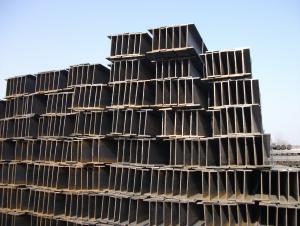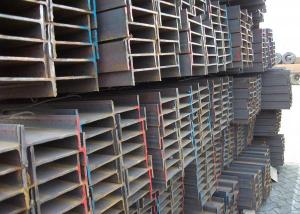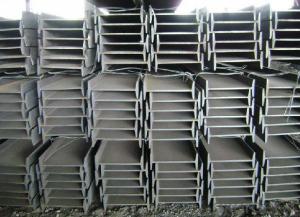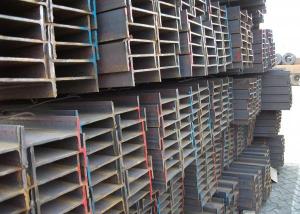Boron Steel I-Beam Element
- Loading Port:
- China main port
- Payment Terms:
- TT or LC
- Min Order Qty:
- 3000 PCS
- Supply Capability:
- 400000 PCS/month
OKorder Service Pledge
OKorder Financial Service
You Might Also Like
OKorder is offering high quality Boron Steel I-Beams at great prices with worldwide shipping. Our supplier is a world-class manufacturer of steel, with our products utilized the world over. OKorder annually supplies products to European, North American and Asian markets. We provide quotations within 24 hours of receiving an inquiry and guarantee competitive prices.
Product Applications:
Boron Steel I-Beams are ideal for structural applications and are widely used in the construction of buildings and bridges, and the manufacturing, petrochemical, and transportation industries.
Product Advantages:
OKorder's Boron Steel I-Beams are durable, strong, and resist corrosion.
Main Product Features:
· Premium quality
· Prompt delivery & seaworthy packing (30 days after receiving deposit)
· Corrosion resistance
· Can be recycled and reused
· Mill test certification
· Professional Service
· Competitive pricing
Product Specifications:
Grade: Q235, SS400, ST37-2, S235JR
Dimensions:
Size: 80mm – 300mm
Length: 6m, 9m, 12m
Packaging: Export packing, nude packing, bundled
FAQ:
Q1: Why buy Materials & Equipment from OKorder.com?
A1: All products offered byOKorder.com are carefully selected from China's most reliable manufacturing enterprises. Through its ISO certifications, OKorder.com adheres to the highest standards and a commitment to supply chain safety and customer satisfaction.
Q2: How do we guarantee the quality of our products?
A2: We have established an advanced quality management system which conducts strict quality tests at every step, from raw materials to the final product. At the same time, we provide extensive follow-up service assurances as required.
Q3: How soon can we receive the product after purchase?
A3: Within three days of placing an order, we will begin production. The specific shipping date is dependent upon international and government factors, but is typically 7 to 10 workdays.
Q4: What makes stainless steel stainless?
A4: Stainless steel must contain at least 10.5 % chromium. It is this element that reacts with the oxygen in the air to form a complex chrome-oxide surface layer that is invisible but strong enough to prevent further oxygen from "staining" (rusting) the surface. Higher levels of chromium and the addition of other alloying elements such as nickel and molybdenum enhance this surface layer and improve the corrosion resistance of the stainless material.
Q5: Can stainless steel rust?
A5: Stainless does not "rust" as you think of regular steel rusting with a red oxide on the surface that flakes off. If you see red rust it is probably due to some iron particles that have contaminated the surface of the stainless steel and it is these iron particles that are rusting. Look at the source of the rusting and see if you can remove it from the surface.
Images:
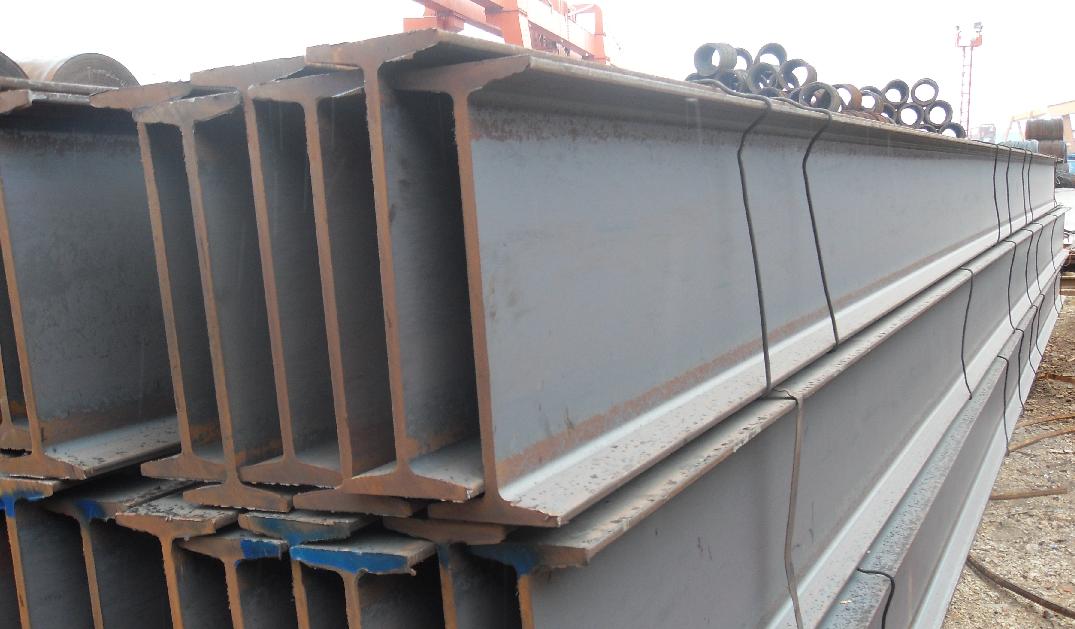
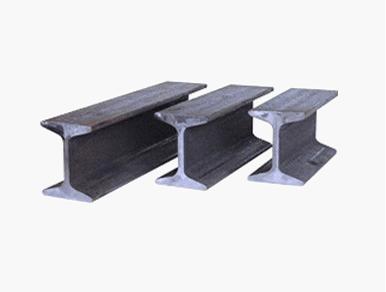
- Q: How do I calculate the difference between rail steel and angle steel, channel steel and I-beam?
- Ordinary I-beam, light I-beam flange is variable cross-section, depending on the thickness of the web, the external thin; H steel: HW, HM, HN, HEA, HEB, HEM and so on, the flange of I-beam is a uniform sectionOrdinary I-beam, lightweight I-beam has formed the national standard, the common 10# I-beam is equivalent to the Internet I100 (such as 10# also channel equivalent channel (U100) for the implementation of the standards of different countries, which have subtle differences in their specifications)H type I-beam is also called wide flange I-beam, HW, HM, HN originated from European standards, HEB is the German standard of I-beam, of which HW, HN I-beam has been widely used in our country and production. HEA HEB HEM will be seen on many German designs and is hard to buy on the domestic market. In the domestic steel structure engineering, if the quantity is few, then may use the specification steel plate to carry on the welding splicing. In the case of large quantities, it is usually considered to use mechanical properties comparable to those of HW and HN steel.
- Q: No. 20 I-beam boasts 7.5 meters. How many tons can it take in the middle?
- Ordinary I-beam, light I-beam flange is variable cross-section, depending on the thickness of the web, the external thin; H steel: HW, HM, HN, HEA, HEB, HEM and so on, the flange of I-beam is a uniform sectionOrdinary I-beam, lightweight I-beam has formed the national standard, the common 10# I-beam is equivalent to the Internet I100 (such as 10# also channel equivalent channel (U100) for the implementation of the standards of different countries, which have subtle differences in their specifications)
- Q: Are there any building codes or regulations that govern the use of steel I-beams in construction?
- Yes, there are building codes and regulations that govern the use of steel I-beams in construction. These codes and regulations are put in place to ensure the structural integrity and safety of buildings. The specific codes and regulations may vary depending on the country or region, but they generally cover aspects such as the design, fabrication, installation, and inspection of steel I-beams. In the United States, for example, the use of steel I-beams is regulated by the International Building Code (IBC). The IBC provides guidelines for the design and construction of buildings, including the use of structural steel components like I-beams. It specifies requirements for factors such as the size and shape of the I-beams, the connection details, and the load-bearing capacities. Compliance with the IBC ensures that the steel I-beams used in construction meet the necessary safety standards. Other countries may have their own building codes and regulations that specifically address the use of steel I-beams. For instance, in the United Kingdom, the regulations are outlined in the Building Regulations. These regulations cover various aspects of construction, including the use of steel beams, and provide guidelines for their design, fabrication, and installation. It is essential for architects, engineers, and contractors to familiarize themselves with the applicable building codes and regulations in their respective jurisdictions to ensure compliance with the necessary standards when using steel I-beams in construction. By adhering to these codes and regulations, they can ensure the structural integrity and safety of buildings, as well as meet the legal requirements for construction projects.
- Q: How do you protect steel I-beams against impact loads?
- One common method to protect steel I-beams against impact loads is by using impact-resistant coatings or wraps. These protective layers are designed to absorb and distribute the impact forces, reducing the likelihood of damage to the beams. Additionally, installing impact-resistant barriers or guards around the I-beams can provide an added layer of protection. Proper engineering and design considerations should also be taken into account to ensure adequate strength and structural integrity to withstand impact loads.
- Q: What are the different types of steel connections used for I-beams?
- There are several types of steel connections used for I-beams, each serving a specific purpose and providing different levels of strength and stability. Some of the commonly used types of steel connections for I-beams include: 1. Welded connections: In this type of connection, the flanges of the I-beam are welded to the column or beam to create a strong and rigid connection. Welded connections are often used in applications where high strength and rigidity are required. 2. Bolted connections: Bolted connections involve the use of bolts and nuts to connect the I-beam to the supporting column or beam. This type of connection allows for easy disassembly and reassembly and is commonly used in situations where the I-beam may need to be replaced or relocated. 3. Riveted connections: Riveted connections involve the use of rivets to join the flanges and webs of the I-beam to the supporting structure. This type of connection provides good shear strength and is commonly used in older structures or in situations where a more traditional and aesthetically pleasing connection is desired. 4. Moment connections: Moment connections are designed to resist both axial and rotational forces. These connections are used in situations where the I-beam is subjected to bending moments, such as in building frames and bridges. Moment connections provide high strength and rigidity. 5. Cleat connections: Cleat connections involve the use of a cleat plate, which is bolted to the flanges of the I-beam and then bolted or welded to the supporting structure. Cleat connections are commonly used in situations where the I-beam needs to be connected to walls or other vertical structures. 6. Splice connections: Splice connections are used to join two or more I-beams together to create a longer beam. This type of connection often involves the use of plates and bolts to ensure a strong and stable joint. Splice connections are commonly used in situations where longer beams are required, such as in large industrial buildings or bridges. It is important to note that the selection of the appropriate type of steel connection for I-beams depends on various factors such as the load requirements, structural design, and specific project needs. Consulting with a structural engineer or a professional in the field is recommended to ensure the appropriate connection type is chosen for a specific application.
- Q: Are steel I-beams resistant to mold or mildew?
- Steel I-beams are not organic materials, meaning they do not provide a suitable environment for mold or mildew growth. Mold and mildew require organic matter and moisture to thrive, and steel I-beams do not fulfill these requirements. Therefore, steel I-beams are highly resistant to mold or mildew infestation. Their non-porous surface and lack of organic matter make them an excellent choice for areas prone to moisture or high humidity, where mold and mildew typically develop.
- Q: Are there any limitations to using steel I-beams?
- Steel I-beams have certain limitations that need to be considered. Here are some key limitations to keep in mind: 1. Weight: Steel I-beams can be quite heavy, making transportation and installation challenging without the right equipment. This can restrict their use in construction projects that have limited accessibility. 2. Cost: Compared to materials like wood or concrete, steel I-beams can be more expensive. The cost of steel itself, as well as fabrication and installation, can contribute to higher overall project costs. 3. Span limitations: Steel I-beams have limitations when it comes to long spans. Additional support or intermediate columns may be necessary. The size and shape of the beam also affect its load-bearing capacity, so careful engineering calculations are required. 4. Corrosion: Steel is vulnerable to corrosion when exposed to moisture or certain chemicals. Without proper coatings or maintenance, the structural integrity of steel I-beams can be compromised over time. 5. Fire resistance: Steel is not naturally fire-resistant and can lose strength and integrity quickly in a fire. Fireproofing measures like coatings or fire-rated insulation may be needed to enhance the fire resistance of steel I-beams. 6. Thermal conductivity: Steel has high thermal conductivity, meaning it transfers heat and cold more easily compared to other materials. Without insulation or thermal breaks, this can result in increased energy loss or thermal bridging. 7. Design flexibility: While steel I-beams offer design flexibility, there may be limitations in terms of architectural styles or aesthetics. The exposed steel look may not be suitable for all construction projects or desired building appearances. Despite these limitations, steel I-beams are still widely used in construction due to their strength, durability, and versatility. However, it's important to consider these limitations and consult with professionals to ensure proper use in specific projects.
- Q: Can steel I-beams be used for cantilevered structures?
- Yes, steel I-beams can be used for cantilevered structures. Cantilevered structures are those that extend horizontally from a support point with no additional supports along the length. Steel I-beams are commonly used in the construction industry due to their high strength and durability. They are designed to withstand heavy loads and provide structural stability, making them suitable for cantilevered structures. The I-beam's shape allows it to distribute the load evenly, preventing excessive stress concentration at the connection point. Additionally, steel I-beams can be fabricated to various lengths and sizes, providing flexibility in designing and constructing cantilevered structures for different applications.
- Q: Can steel I-beams be used for highway overpasses?
- Indeed, highway overpasses can make use of steel I-beams. Owing to their robustness and resilience, steel I-beams are frequently employed in the construction of bridges and highway overpasses. They offer exceptional support and a remarkable capacity to bear heavy loads, rendering them suitable for enduring substantial traffic and the weight of vehicles traversing the overpass. Moreover, the fabrication and installation of steel I-beams can be accomplished with ease, making them a favored option for highway infrastructure ventures.
- Q: What is the standard for No. 14 I-beam?
- I-steel whether ordinary or light, because the section size are relatively high and narrow, so the moment of inertia of section two of the spindle is larger, so it only can be directly used in the web plane bending member or the composition of lattice stress components. It is not suitable for the axial compression member or the bent member perpendicular to the web plane, which has great limitations in its application.H section steel is a kind of economical and economical surface profile (other cold bending thin wall steel, pressed steel plate, etc.). Because of the reasonable cross-section shape, they can make steel more effective and improve the bearing capacity. Unlike ordinary I-beam, the flange of H steel is widened, and the inner and outer surfaces are usually parallel so that it is easy to connect with high strength bolts and other components. The size of the series is reasonable, the model is complete, easy to design and use.
Send your message to us
Boron Steel I-Beam Element
- Loading Port:
- China main port
- Payment Terms:
- TT or LC
- Min Order Qty:
- 3000 PCS
- Supply Capability:
- 400000 PCS/month
OKorder Service Pledge
OKorder Financial Service
Similar products
Hot products
Hot Searches
Related keywords
